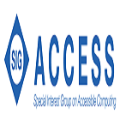It is an important task to model realized volatilities for high-frequency data in finance and economics and, as arguably the most popular model, the heterogeneous autoregressive (HAR) model has dominated the applications in this area. However, this model suffers from three drawbacks: (i.) its heterogeneous volatility components are linear combinations of daily realized volatilities with fixed weights, which limit its flexibility for different types of assets, (ii.) it is still unknown what is the high-frequency probabilistic structure for this model, as well as many other HAR-type models in the literature, and (iii.) there is no high-dimensional inference tool for HAR modeling although it is common to encounter many assets in real applications. To overcome these drawbacks, this paper proposes a multilinear low-rank HAR model by using tensor techniques, where a data-driven method is adopted to automatically select the heterogeneous components. In addition, HAR-It\^o models are introduced to interpret the corresponding high-frequency dynamics, as well as those of other HAR-type models. Moreover, non-asymptotic properties of the high-dimensional HAR modeling are established, and a projected gradient descent algorithm with theoretical justifications is suggested to search for estimates. Theoretical and computational properties of the proposed method are verified by simulation studies, and the necessity of using the data-driven method for heterogeneous components is illustrated in real data analysis.
翻译:模拟金融和经济学中高频数据已实现的挥发性是一项重要任务,而且作为最受欢迎的模型,各种不同的自动递减(HAR)模型是该领域应用的主要模式,然而,这一模型有三个缺点:(一) 其多样化的波动性组成部分是具有固定重量的每日实现的挥发性线性组合,这限制了其对不同类型资产的灵活性;(二) 这一模型的高频概率概率结构以及文献中许多其他HAR型模型,仍然未知;(三) 虽然在实际应用中遇到许多资产是常见的,但没有高维度推断工具。为克服这些缺陷,本文件建议采用高压技术,采用数据驱动法自动选择各种类型资产。此外,HAR-It<unk> o模型以及文献中许多其他HAR型模型中的HAR型模型类型模型,以及(三) 用于HAR型模型模型的高度模型模型,没有高维度推断工具,尽管在实际应用中遇到许多资产是常见的。</s>



